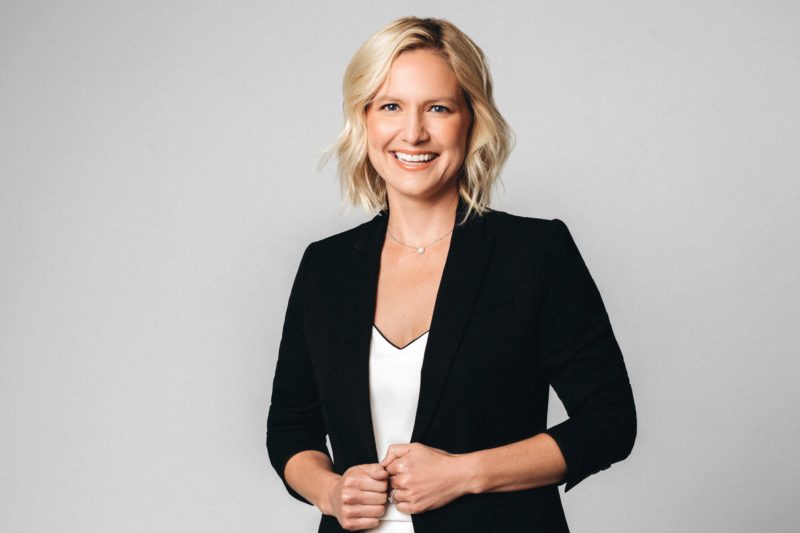Emily Balcetis, PhD, is an Associate Professor of Psychology at New York University (NYU) and the author of more than seventy scientific publications and several books, including her latest one, Clearer, Closer, Better: How Successful People See the World. Her TED talk on Why Some People Find Exercise Harder Than Others has been viewed millions of times. I spoke with Emily ahead of her upcoming panel on How Biased Are We? about her new book, the phenomenon of “wishful seeing,” and the ways in which New Yorkers are biased…
You did a famous TED talk on why some people find exercise harder than others. You recommend that in order to meet our exercise goals, we need to keep our eyes focused on the finish line. How can we apply this strategy in our professional lives?
In my TED talk I shared a strategy that made a finish line to exercisers look closer and increased the speed with which they reached it. They narrowed their focus of attention, ignoring their peripheral vision and the distractions around them. With that narrowed focus, they reached their mark faster and better. That was about the physical distance we see, but the same tactic works for distances of other kinds that might be more psychological, like time or magnitude.
Just like the exercisers did to help them reach their finish line faster, we can focus our attention on any goal we might have set that we hope to reach. That goal might be something we can only achieve in the distant future or it might be one that right now seems almost too challenging to meet. But when we focus on it, it can seem nearer to us, closer at hand, and more relevant to what we are doing today.
Focusing our mind on where we want to be can draw it closer to us now and inspire us to work harder today to reach it.
You just released a new book, Clearer, Closer, Better: How Successful People See the World. What’s a surprising finding that you uncovered in your research on what makes people successful?
What DIDN’T surprise me is that people set goals and struggle to reach them. What did surprise me is that a common reason for the challenges they face is that the most commonly used, go-to tactics are ones that just don’t work. The strategies we often use, like continually reminding ourselves of our goal, internal pep talks or the like, require constant monitoring, attention, and effort. They’re draining. But I discovered four strategies that can be easily implemented, integrated into productive habits, and sustained for the long haul.
They can nudge us towards decisions that better align with our long term goals. Successful people already seem to be using them, but the rest of us can easily adopt them too.
We often gauge what’s possible based on our individual history and biases – but isn’t that severely limiting for advancing scientific knowledge? What can be done to help scientists think more creatively?
We stifle our own creativity when we fear failure. If we are concerned that taking a risk could lead to mistakes which would define us as failures, then it makes sense that we take the safer, surer bet. The consequence is that innovation is less likely.
In my research, I found that companies cultivate a spirit of curiosity and creativity when they remove the stigma of failure. When well-reasoned missteps are normalized, people can admit defeat, learn, and move forward faster.
You also studied the phenomenon of wishful seeing. We all know the saying that love is blind. Our positive bias towards our partners (and ourselves!) allows us to overlook problems so we can invest in the long-term success of our relationship. But when does wishful seeing turn bad? How do we know when it’s time to take off the rose-tinted glasses?
Research led by my team member, Shana Cole, found that when we are in committed romantic relationships, we see interesting, single people who might pose a threat to the stability of our marriage, for instance, as less attractive than other people do. And I mean literally see them as physically less appealing. This is protective and useful as it decreases the temptation that they might pose for our otherwise wandering eye.
But sometimes we might need to see our social world for what it is. Think about reading someone’s emotional reactions. Understanding what they are expressing to us, non-verbally, through subtle or not-so-subtle upturned corners of lips or furrowed brows might be particularly useful for rightly determining their feelings and correctly gauging how we should react.
The health of our social relationships could depend on our ability to read others for what they are showing us, rather than what we wish them to feel.
As a fellow New Yorker, what are some New York biases that you’ve observed? How is a New Yorker’s perception of the world different?
New York is a visual cacophony. Which gives us options. We can orient to all of the details of our visual surroundings, paying attention to the bodegas off to the right, the taxis to the left, the bikers up front, the pretzel cart behind, and the hundreds of people we pass by. Or we can, in a sense, experience a sort of attentional blindness, paying little regard to what might seem like overstimulation.
Both of these strategies have their place and are beneficial under unique circumstances. As New Yorkers, we get ample experience with both possibilities and likely are more flexible in calling upon either of them. It’s like a super power we have. To tune in or tune out, when one might be better than the other. The trick is knowing which one is right, when.
Meet Emily Balcetis this Thursday, March 5th, at 6pm for the panel event How Biased Are We? at Deutsches Haus at NYU. Details here.


